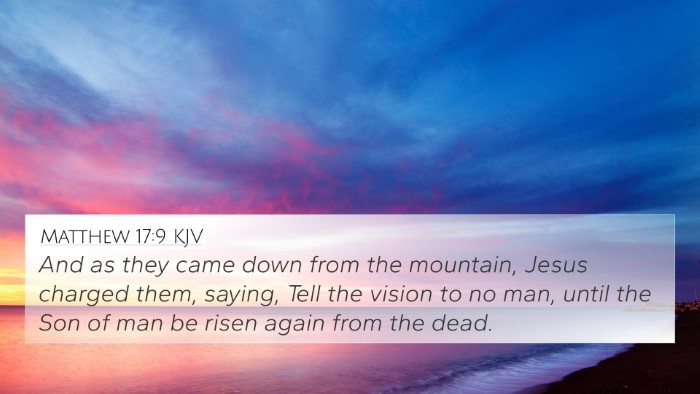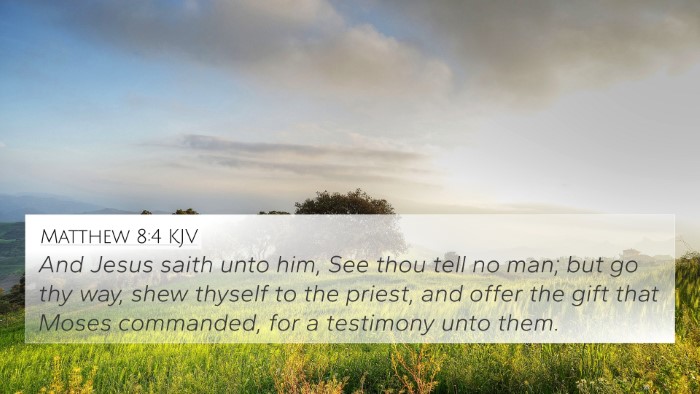Matthew 12:16 states, "And charged them that they should not make him known." This verse is part of a larger narrative where Jesus performs healings and miracles yet instructs those He heals to keep His identity concealed. Below is a detailed analysis of the meaning and implications of this scripture based on insights from Matthew Henry, Albert Barnes, and Adam Clarke.
Contextual Background
Matthew 12:16 finds itself in the context of a larger discourse regarding Jesus' ministry during the time He was confronted by the Pharisees and the skepticism surrounding His authority and miracles. His request for silence among those He healed suggests a strategy for His mission and a reflection on humanity's understanding of divine revelation.
Interpretation of Matthew 12:16
There are several key insights into Matthew 12:16 from the commentaries:
-
Messianic Secret: Both Matthew Henry and Albert Barnes discuss the concept of the "Messianic Secret," wherein Jesus often silenced demons and those He healed about His identity as the Messiah. This secrecy serves to fulfill the prophecy while inviting the crowds to a deeper reflection on who He is.
-
Fulfillment of Prophecy: This action mirrors the fulfillment of Old Testament prophecies, particularly Isaiah 42:1-4, where it discusses the servant of the Lord bringing justice and instructs His followers to be humble and gentle, echoing Jesus' own ministry.
-
Spiritual Blindness: Adam Clarke emphasizes the spiritual blindness of the Pharisees and others who could not recognize Jesus as the Messiah despite His miracles. This verse illustrates the conflict between divine light and human blindness to it.
-
The Role of the Disciples: By asking people to remain silent, Jesus is also preparing His disciples for the mission ahead, teaching them about discretion and the need for spiritual understanding before proclaiming His identity.
Cross-References
Matthew 12:16 connects with various other passages in both the Old and New Testaments, shedding light on similar themes and prophetic fulfillment. Below are some notable cross-references:
- Isaiah 42:1-4: Outlines God’s servant who brings forth justice.
- Mark 1:25-27: Jesus commands a demon to be silent, illustrating authority over evil.
- Luke 4:41: Similar account of Jesus silencing demons after healings.
- Matthew 8:4: Jesus instructs a leper not to tell anyone after healing him.
- John 7:4: Discusses the importance of Jesus’ divine timeline and ministry.
- Matthew 9:30: Another instance of Jesus mirroring similar instructions to those He healed.
- Matthew 11:25-27: Speaks to God revealing spiritual truth to the humble.
Thematic Connections
The related themes in Matthew 12:16 resonate through various narratives and passages across the Bible:
- Humility: The emphasis on modesty in revealing truths about Jesus reminds believers of the humble nature of faith.
- Revelation and Understanding: Links to how God reveals truth incrementally to humanity, requiring spiritual sensitivity.
- Mission and Authority: The underlying comprehension of Jesus' mission underscores the connection between His actions and His spiritual authority.
- Judgment and Mercy: Illustrates the interplay of God’s mercy through healing while still being a judge of human hearts.
Concluding Thoughts
Understanding Matthew 12:16 through the lenses of these commentaries brings rich insights into Jesus' ministry. By exploring cross-references, connections between Bible verses, and the thematic explorations of His teachings, believers can gain a deeper understanding of God's purpose and the intricate tapestry of scripture.







